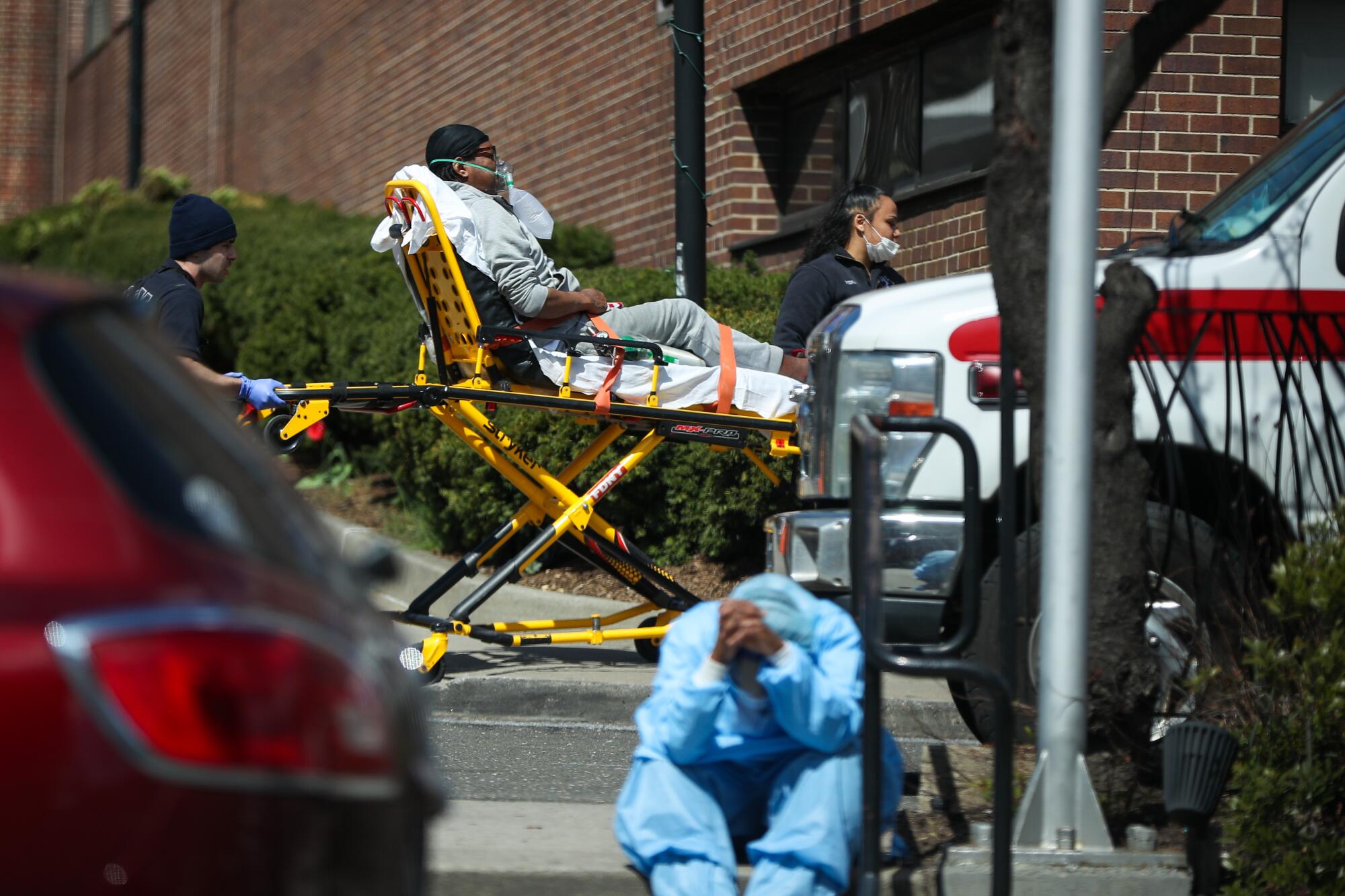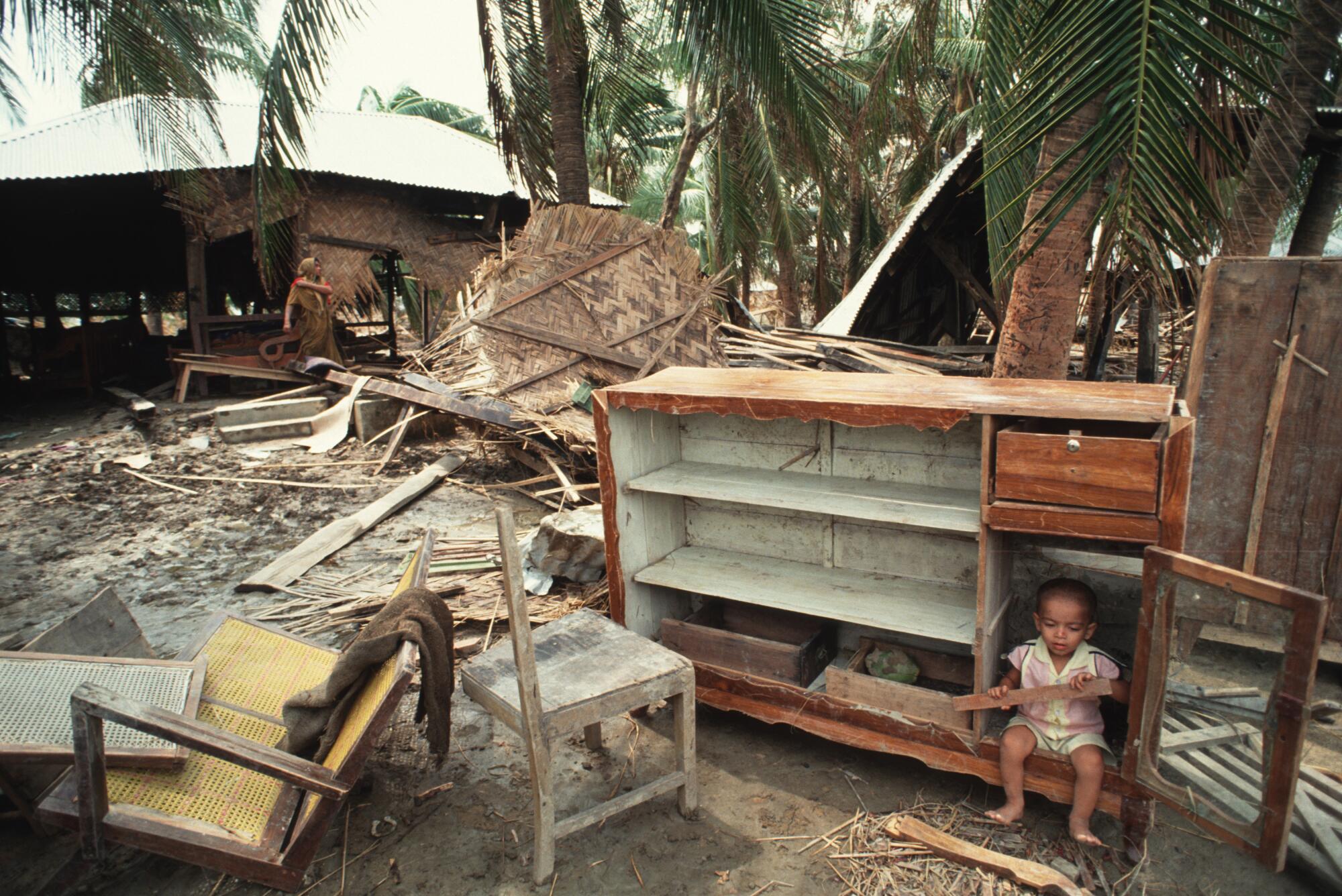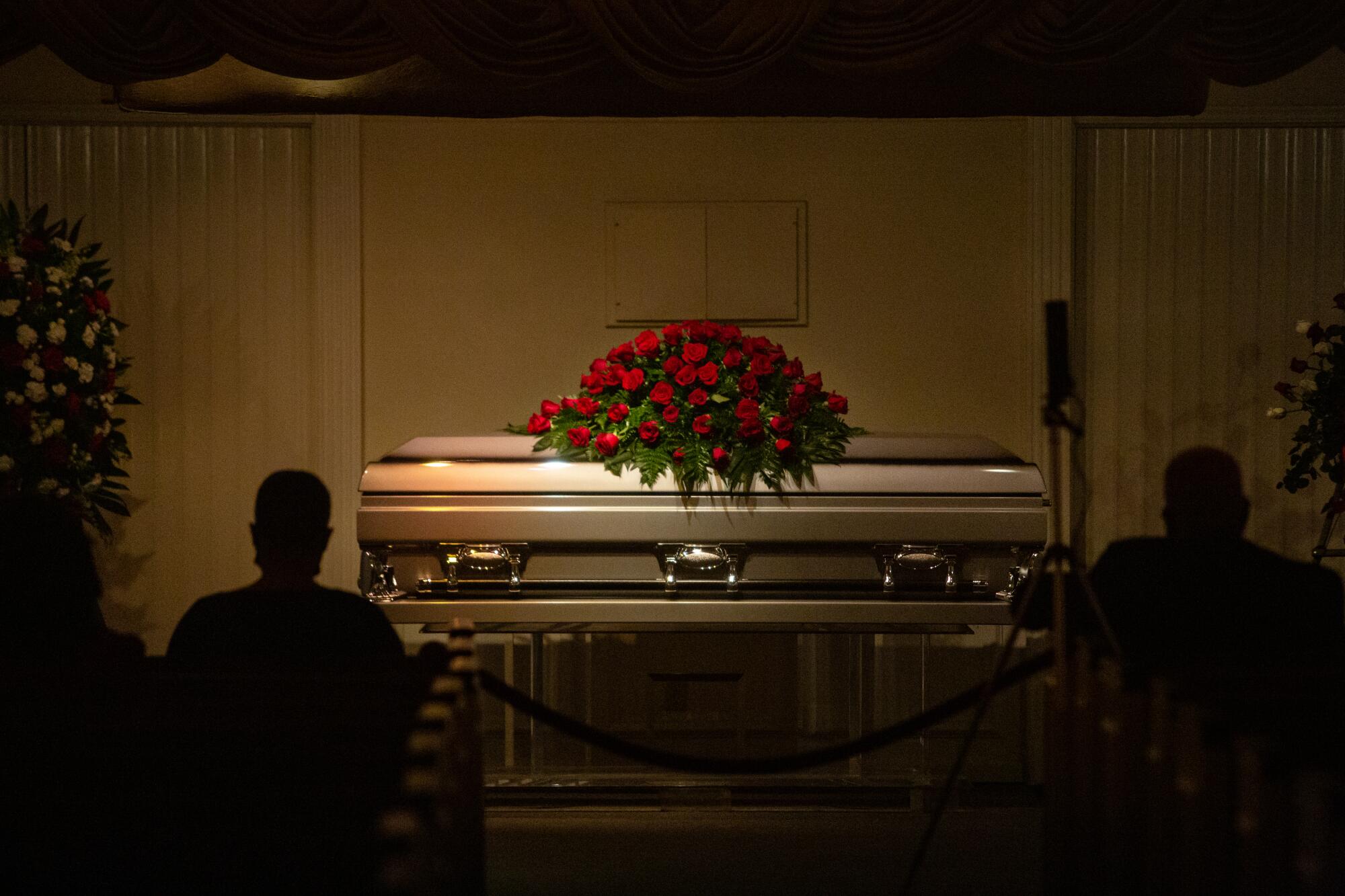
- Share via
Most of us will never know the name of the first victim of the novel coronavirus. Nor will we know the last.
With more than 3.1 million cases and 217,000 deaths worldwide, we are awash for the moment in a statistical contagion that continues to spread. Red dots cover the globe, details lost to the rising tide.
As of this writing, the United States has been hit the hardest. COVID-19 has claimed more than 58,000 lives, and we have been asked to be prepared for nearly twice that number. We have more than 1 million confirmed cases, outcomes unknown.
The numbers consume us. Captured on dashboards, bar charts, straight lines and curves, they record and document the virus’ reach and force us to ask whether we value one life more than thousands of lives. Can we grieve for strangers as we grieve for those we know?
The question has haunted survivors of catastrophes throughout history (“Lisbon is in ruins, and they dance in Paris,” wrote Voltaire in 1755 after one of Europe’s most devastating earthquakes), and the answer — if there is one — lies less in our ability to empathize than in the stories we tell to explain our losses.
Some narratives have already begun to take shape. Early drafts have been circulated. Politicians and bureaucracies failed to prepare; missteps were taken. Healthcare workers stand on the front line of heroism and fear; they do their best.
But as we grasp at plausible story lines, something to sustain us, we sense something missing in these familiar tropes. To blame or glorify isn’t enough.
Darwinian in its design, Malthusian in its reach, this new virus is writing its own script, following its own imperative: first hitting hard, then drifting away. For a culture accustomed to following and liking, such behavior is confounding.
Unprecedented is the word often used to describe this moment in our history. There have been plagues before, but the sum total today — medical crises, plunging economy — is new. So how do we tell a story that’s never been told before?
We talk of testing and vaccines, of creating stimulus packages, building a new world order, but such hope and resolution fail to account for the chaos we’ve experienced. Even as we parse the demographics and narrow in on social disparities, the boundaries of this pandemic remain blurred, and in this blurring — a beginning with no end — lies a terrible lingering.
Today’s crisis will provide little resolution. There will be no dancing in the streets, no celebrations of a vanquished woe. The story will merely taper off, and for now, the best we can do is follow the numbers. With solemn recitation, they draw us into the past.
In 1937, archaeologists, working in central Europe, discovered a notched wolf bone nearly 30,000 years old. They identified it as a tally stick, a means of remembering a moment in time, a succession of events. What the 55 marks on this artifact meant, we cannot say, but we recognize the impulse: someone looking for a through-line.
Out of the welter of life, we try to bestow order, and out of order, we hope to find meaning. Little wonder that counting is often the first step, tragedy the object of our enumerations.
In her essay “The Wreck of Time,” Annie Dillard writes of the flooding that devastated Bangladesh following a cyclone in April 1991, killing 138,000 people. That is hard to imagine, she said to her 7-year-old daughter, who disagreed.

“No, it’s easy,” she said. “Lots and lots of dots, in blue water.”
In the aftermath of the Civil War, the nation engaged in a ferocious effort to tally the blue dots. The numbers then were stunning, especially for a country whose population was a fraction of today’s: 3,968 killed at Vicksburg; 3,675 at Antietam; 3,969 at Chickamauga.
Historians might question such precision, but there was comfort in the mastery of the facts.
Counting helped, says historian Drew Gilpin Faust. Her elegy to the Civil War, “This Republic of Suffering,” chronicles the effect of that tragedy upon Americans, who lost loved ones in battlefields far from home, leaving families unreconciled to the news.
Death in America had had a theatrical familiarity: at home, surrounded by loved ones, prepared and ready to meet God. But this war and the enormity of these numbers changed that, giving the loss of a father or son a ghostly, faraway demeanor, and a culture was forever changed.
“One of the words that got used in the 19th century — that was arresting to me — was what it took to ‘realize’ that someone was dead,” said Faust.
Without a corpse, the answer seemed unclear, but by counting, said Faust, you could connect yourself to those who had died. Counting became such an obsession that Ford’s Theatre, the site of Lincoln’s assassination, was appropriated for the task. Then in 1893, two floors, bearing the weight of documents and personnel, collapsed, killing 22.
But numbers alone didn’t tell the whole story, leaving historians with a recognizable problem: how “to grasp both the significance of a single death and the meaning of hundreds of thousands,” as Faust writes.
Eventually the culture adopted two storylines. One asserted the value of life, and the other questioned that assertion. One invoked sentimentality — the diaries and daguerreotypes of the killed, wounded and missing — while the other struggled to reconcile these “sad pictures” in the face of war’s mass brutality.
Today two competing accounts have emerged as well. Twitter tributes celebrate lives lost too soon, and coronavirus doubters believe everyone is overreacting.
The truth lies somewhere between sentiment and skepticism, and for that we turn again to the numbers.
Initially, forecasters estimated that between 100,000 and 240,000 people in the U.S. would die of COVID-19. More recently that number was dropped to 60,000.

But for statistician Edward Tufte, the revision is inconsequential.
“Almost everything is an underestimation,” he said, citing suppression and politics in discounting the scope of this tragedy. “But the numbers are good enough to tell us what to do” — social distancing, behavior modification — “even if they are underestimated.”
Tufte, who has written extensively on the interpretation of information, understands how challenging numbers alone can be for those who want a more empathetic connection, but that absence shouldn’t minimize the value of these lives.
“We’re walking in their shoes,” he said of those whose one life now counts among tens of thousands. “It is as if we did a brief interview with everyone, and they are telling their story with a number. We would like more detail, but this tells us about the scope of the problem.”
Statistical lives matter, but numbers alone are not always enough. Against any catalog of the dead, we must continue to look for the story that will reconcile us to these mostly impersonal deaths.
Perhaps the story we most need to hear is the story we least want to tell.
“Death is taking a central place in a society that has pushed death from its consciousness,” said Faust, who looks to the mid-19th century, when Americans believed that by contemplating death, one lived life to the fullest.
For modern Americans, she says, “to live life to the fullest, you don’t think about death.”
Such reluctance might be attributed to the urgencies of our lives and an unwillingness to accept the simultaneity of both life and death. We embrace one and believe we can forsake the other.
Faust argues that we have fooled ourselves into thinking that we have control over our lives, our ambitions, our sense of an ordered society. “This pandemic,” she said, “shows we control nothing, which is humbling for a society that has not been humbled.”
And avoidance, like denial, will come with a cost, especially if we just pick up where we left off.
Not so long ago, we faced this dissonance, and it began with numbers as unavoidable and disconcerting as those we face today.
More than 1.3 million people died in the war in Vietnam, including 58,318 Americans. Ending in defeat, this tragedy tore through the country, begging for resolution.
In November 1980, an open competition was announced for the design of a Vietnam War memorial. Jurors were selected, rules laid out, and a 21-year-old architecture student at Yale submitted her winning proposal.
The Vietnam Veterans Memorial in Washington, D.C., succeeds in merging two narratives, making the deaths of each American soldier feel intimate without minimizing the scale of the losses.


Even though its designer, Maya Lin, knew the monument would convey “the sense of overwhelming numbers,” she hoped that it would allow “each individual to resolve or come to terms with this loss.”
“For death is in the end a personal and private matter,” she wrote in her 1981 submission, “and the area contained within this memorial is a quiet place meant for personal reflection and private reckoning.”
But the memorial is more than an intimate encounter with death. It is a story of grief that will play out over generations.
Visitors step close and reach out. They touch a name and see themselves — as the world sees them — reflected in the polished black marble.
Lin’s work is a reminder that death is not anonymous. Grief transforms us all, no matter the numbers, and that story bears repeating even as the pandemic leaves us counting.
More to Read
Sign up for Essential California
The most important California stories and recommendations in your inbox every morning.
You may occasionally receive promotional content from the Los Angeles Times.














